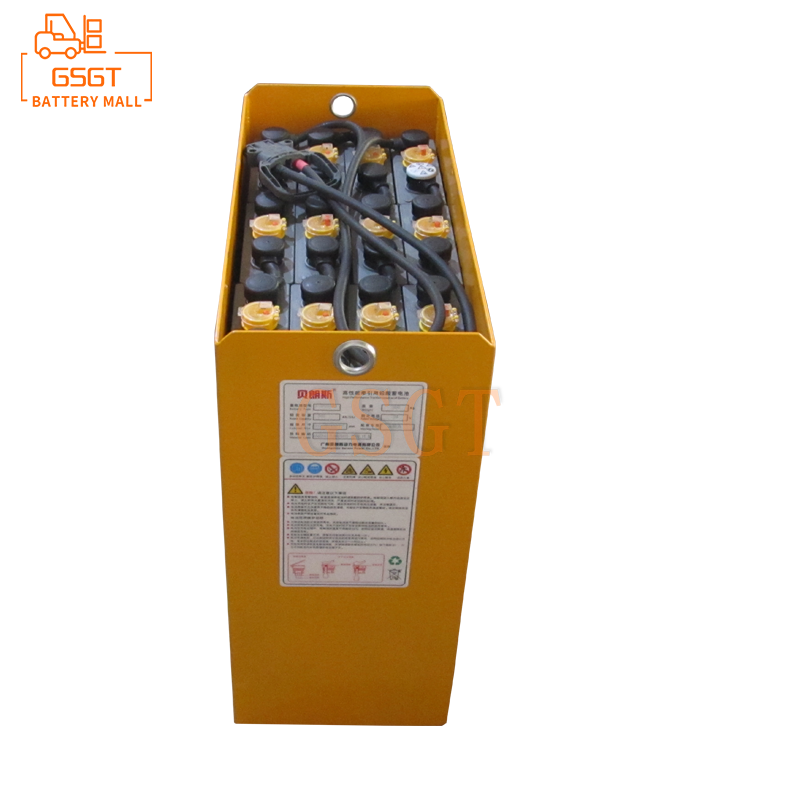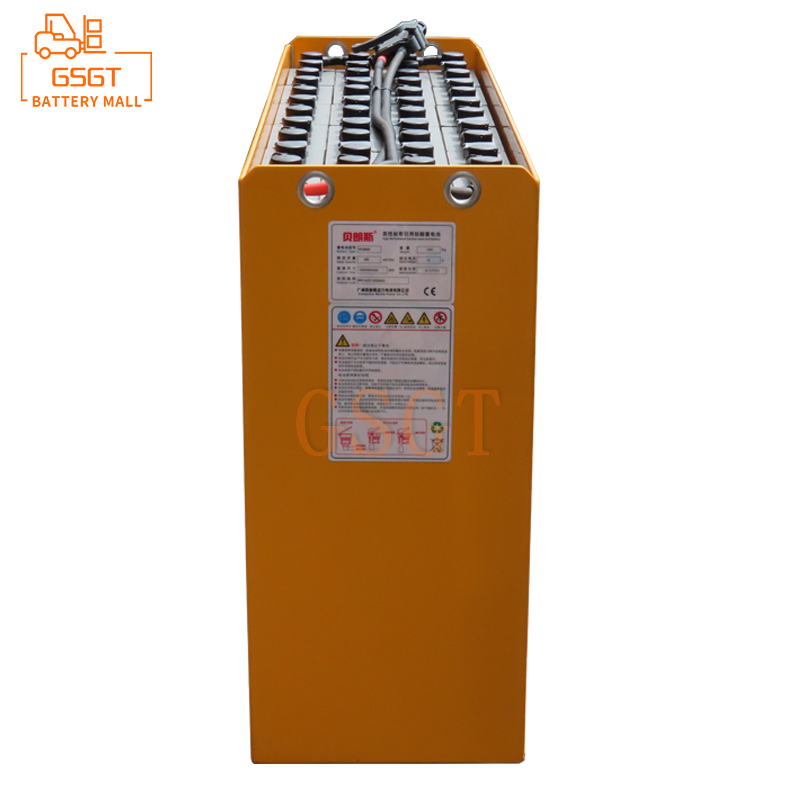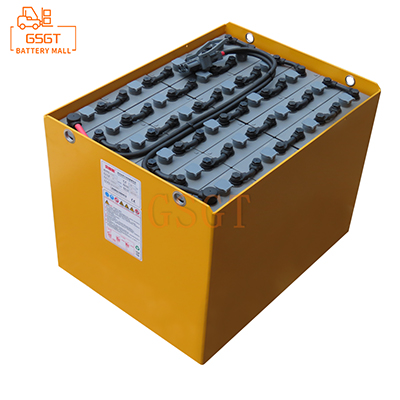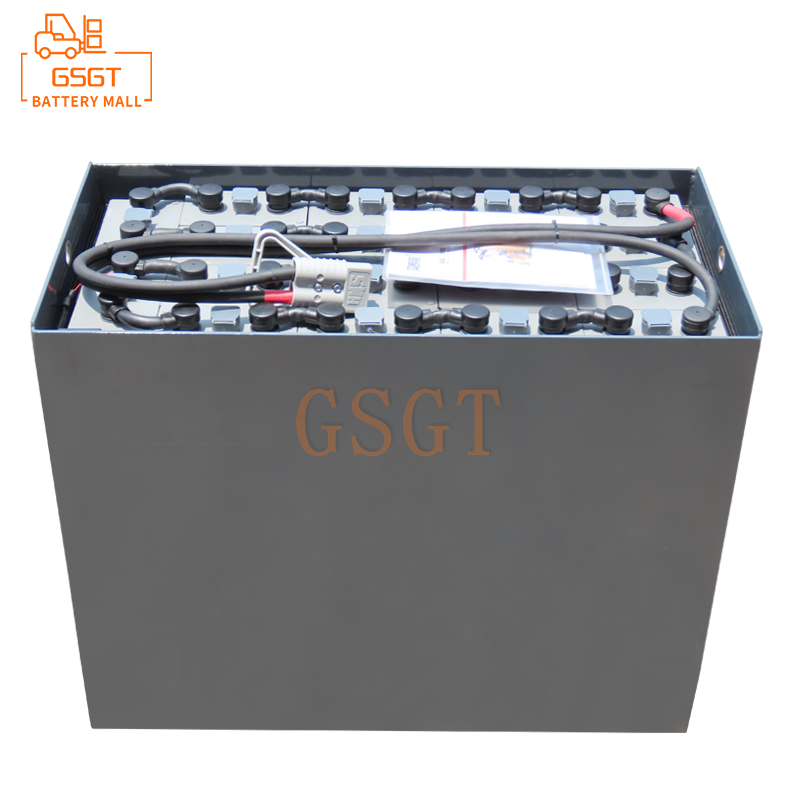Time:2025-03-28 17:47:12
Browse:483
In the field of logistics warehousing and industrial production, the endurance of forklift trucks directly affects the operation efficiency and operating costs. For a long time, lead-acid battery as the main power source of forklift truck, its endurance performance has attracted much attention. Today, through a series of technological innovations and optimization strategies, lead-acid batteries are expected to double the life of forklifts, bringing new development opportunities to the industry.
## Battery technology upgrade
### New plate material application
Plate is the core component of lead-acid battery, and its material properties play a key role in battery life. The traditional plate mostly uses common lead-antimony alloy, which has the problems of large gas extraction and high self-discharge rate, which affects the energy utilization rate of the battery. At present, high-purity lead-calcium alloy plates are emerging. This alloy greatly reduces the phenomenon of gas extraction, reduces the electrolyte water loss, and effectively improves the charge and discharge efficiency of the battery. The research shows that the discharge time of lead-acid batteries with lead-calcium alloy plates can be extended by 20%-30% under the same amount of electricity. For example, the new lead-calcium alloy plate developed by a well-known battery manufacturer has improved the utilization rate of active substances by 15% by optimizing the alloy ratio and manufacturing process, and the driving range of forklift trucks has increased significantly under the same working conditions.
### Electrolyte formulation improved
As the medium of ion conduction inside the battery, the formula of electrolyte directly affects the performance of the battery. The traditional electrolyte is volatile at high temperature, and the ion conductivity is poor at low temperature, which limits the battery life. To overcome this dilemma, researchers have enhanced the ionic conductivity of the electrolyte by adding special additives. For example, adding organic sulfonic acid additives to the electrolyte can reduce the internal resistance of the battery and improve the high current discharge performance. In low temperature environment, by adjusting the specific gravity and freezing point of the electrolyte, the battery can maintain good discharge characteristics at -20℃. The improved electrolyte, combined with the advanced battery structure design, can increase the endurance of the forklift truck by 15%-20% under different ambient temperatures.
## System optimization strategy
### Intelligent energy recovery system
During the braking process of forklift, a lot of mechanical energy is generated. The intelligent energy recovery system can collect and convert this energy into electricity and store it back in the lead-acid battery. The system monitors the operation status of the forklift truck in real time through the sensor, and when the brake signal is detected, it quickly switches the circuit and changes the motor into the generator mode. For example, in logistics warehouses, forklifts frequently carry out cargo loading and unloading and short-distance transportation, and brake operations are frequent. According to statistics, forklifts equipped with energy recovery systems can recover about 20%-30% of the braking energy in a working day. This part of the recovered energy is directly converted into electrical energy and stored in the battery, providing additional power for the subsequent operation of the forklift and effectively increasing the driving range.
### Efficient power management system
The high efficiency power management system can monitor the power, voltage, current, temperature and other parameters of the lead-acid battery in real time, and intelligently adjust the battery output power according to the actual working conditions of the forklift. When the forklift truck is running with no load or light load, the system automatically reduces the battery output current to avoid unnecessary energy consumption; When the forklift is heavy climbing or accelerating, the system instantly provides high power output to ensure that the forklift is powerful. For example, a forklift with an advanced power management system can operate under complex conditions and reduce battery energy consumption by 15%-20% compared to conventional forklifts. Through accurate power management, the energy of the lead-acid battery is more rationally utilized, thus achieving improved battery life.
## Maintenance upgrade
### Regular deep maintenance
The traditional forklift lead-acid battery maintenance is mostly surface inspection and simple rehydration, which is difficult to solve the deep-seated problems inside the battery. Regular deep maintenance covers the battery plate vulcanization degree testing, internal resistance measurement and electrolyte composition analysis. The sulfide on the plate can be removed effectively and the activity of the plate can be restored by using pulse repair technology to detect the vulcanization of the plate with professional equipment. Regularly measure the internal resistance of the battery, timely find the internal connection is poor or plate aging problem, and repair or replace. The composition of the electrolyte is analyzed, and the specific gravity of the electrolyte and the additive content are adjusted according to the actual situation to ensure that the chemical reaction inside the battery is in the best state. After deep maintenance of the lead-acid battery, the performance has been significantly restored, and the battery life can be increased by 10%-15%.
### Optimize charging strategy
A proper charging strategy is crucial to extending battery life. The traditional constant voltage charging method can easily lead to overcharge or undercharge of the battery. Nowadays, intelligent three-stage charging strategy is used, that is, constant current charging, constant voltage charging and floating charging are combined. At the initial stage of charging, a large constant current is used to quickly supplement the electricity to improve the charging efficiency; When the battery power reaches 80%-90%, switch to constant voltage charging to prevent overcharging; Finally, it enters the floating charge stage to maintain the full charge state of the battery and compensate the self-discharge loss of the battery. In addition, according to the ambient temperature of the battery, the charging voltage and current are automatically adjusted to avoid the influence of high or low temperature environment on the charging effect. The optimized charging strategy can make the battery more fully charged each time, and the mileage of the forklift will increase by about 10% after long-term use.
Through multi-dimensional initiatives such as battery technology upgrades, system optimization and maintenance innovations, lead-acid batteries have the potential to double the battery life in forklift applications. This not only brings lower operating costs and higher operational efficiency for forklift users, but also promotes the green and efficient development of the entire logistics and industrial field.

$1105

$3810

$3405

$2140

MESSAGE
Professional And Efficient
Security
Affordable Price
Professional Services